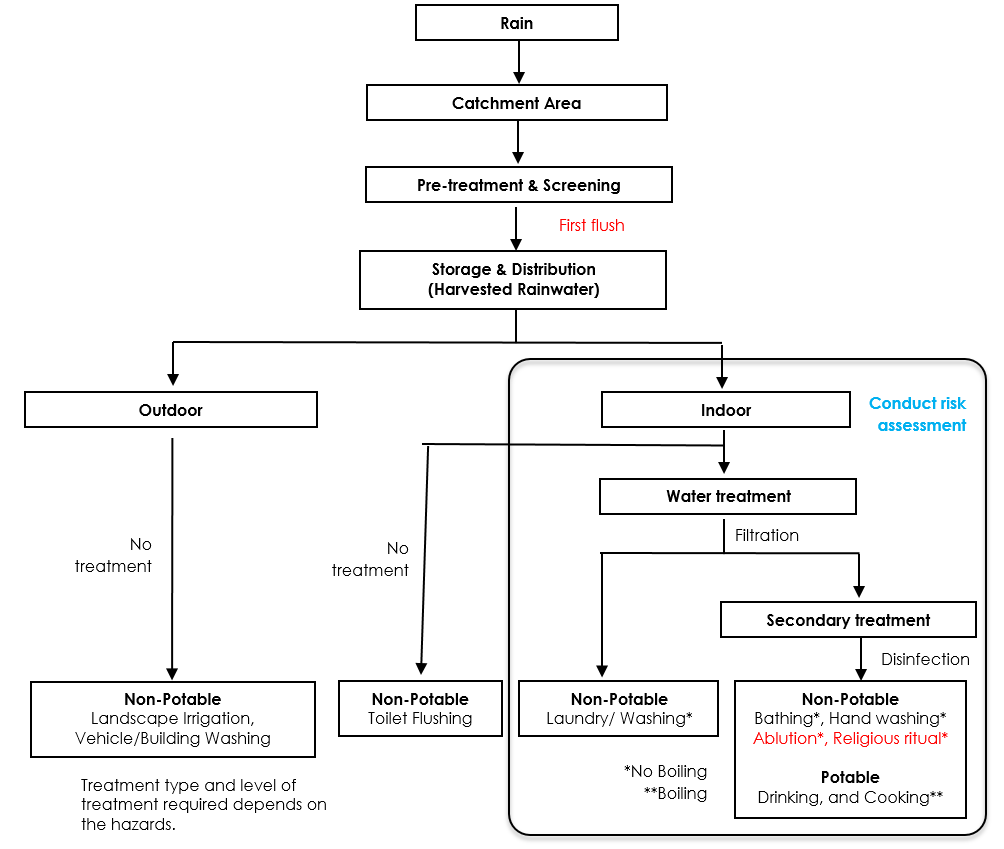The goal of pre-treatment is to remove leaves and debris from the rainwater runoff as thoroughly as possible before it enters the storage tank. This reduces the organic matter in the tank and minimises the need for post-storage treatment. To prevent leaves and debris from entering the system, mesh filters are commonly provided at the mouth of the drainpipe, and a first-flush device is used in the conduit before it connects to the storage tank.
Treatment of harvested rainwater becomes essential when contamination is anticipated. Importantly, treated rainwater must be protected from recontamination if it is to be stored over a longer period for subsequent use. Filtration, such as using a home water filtration pitcher, may effectively remove chemicals, dust, pollen, mold, and other contaminants. Filters may be made of paper, polypropylene, or non-corrosive metal, and typically involve fine particle filtration and activated charcoal filtration. Fine particle filtration removes microorganisms, sediment, metals, and organic matter. Hard water can interfere with the functioning of a filter, which makes rainwater-a soft water-easy on filters. Activated Carbon Filtration (ACF) employs filtration and adsorption techniques. Water passing through a fine sediment filter is then treated through an ACF rated at 3 microns or smaller, using carbon-based materials such as coal, fruit pits, or coconut husks.
Secondary treatment of stored rainwater only makes sense if it is done properly and if hygienic collection and use of the water will ensure it does not suffer from re-contamination. There are several types of treatment possible, the most common being chlorination, boiling, filtration and exposure to ultraviolet.
A sanitary inspection is a quick, on-site evaluation, typically conducted using a checklist, to identify and address priority risk factors that could lead to water supply contamination. After identifying these risk factors through the inspection, corrective actions and ongoing management and monitoring can be implemented to progressively manage and mitigate these risks.
While some countries permit the use of harvested rainwater as a source of drinking water, some prohibit it requiring separate plumbing systems for potable and harvested water to prevent contamination. Untreated rainwater can pose health risks, making treatment and disinfection essential to meet drinking water guidelines and safeguard public health. Therefore, treatment and disinfection of harvested rainwater are required to meet the drinking water guidelines and protect public health. Nonetheless, boiling is a very effective method of disinfection and very simple to carry out. Boiling water for 10 to 20 minutes is typically sufficient to inactivate most harmful pathogens. Hence, boiling can help make it safer for human consumption.

